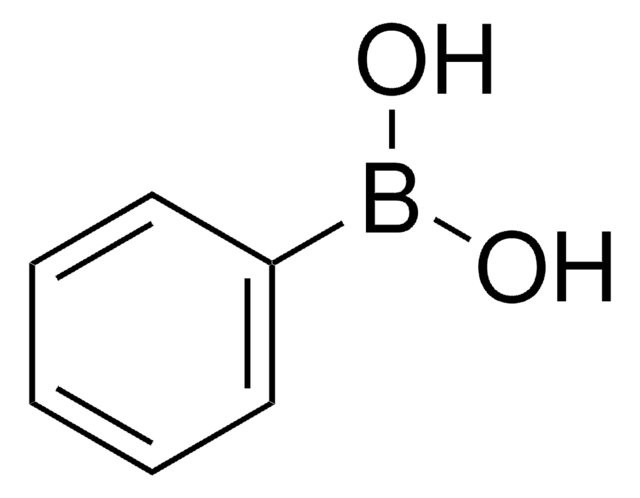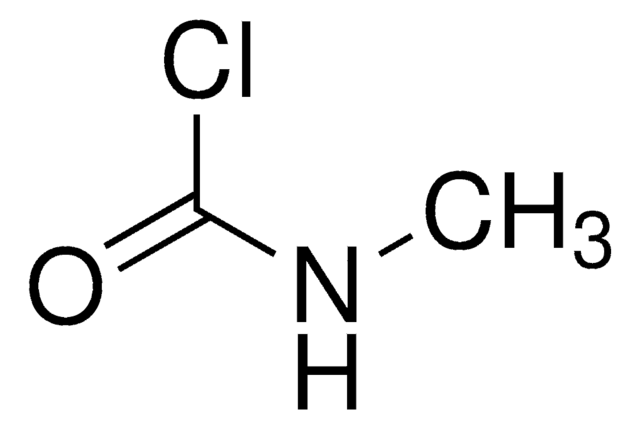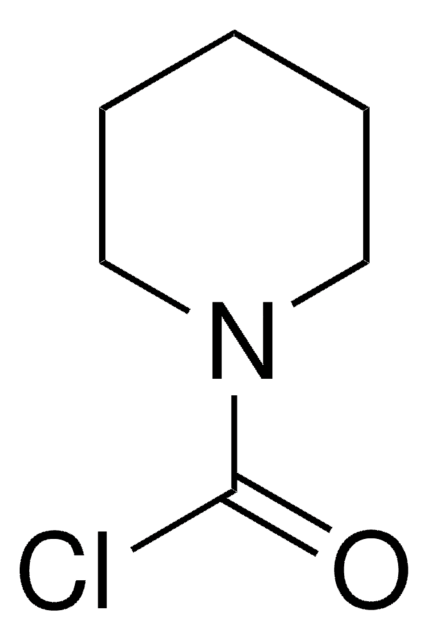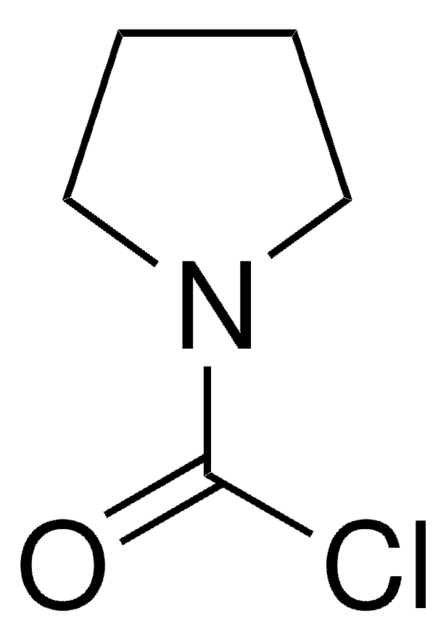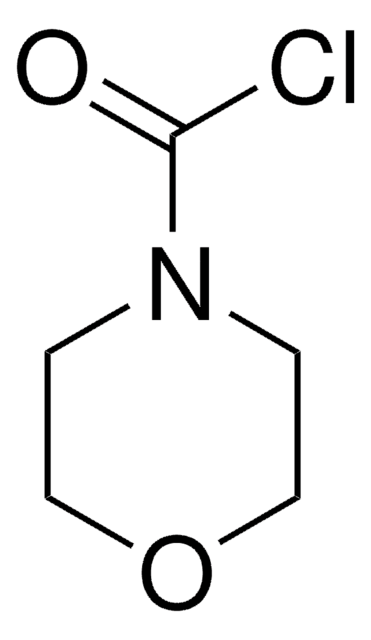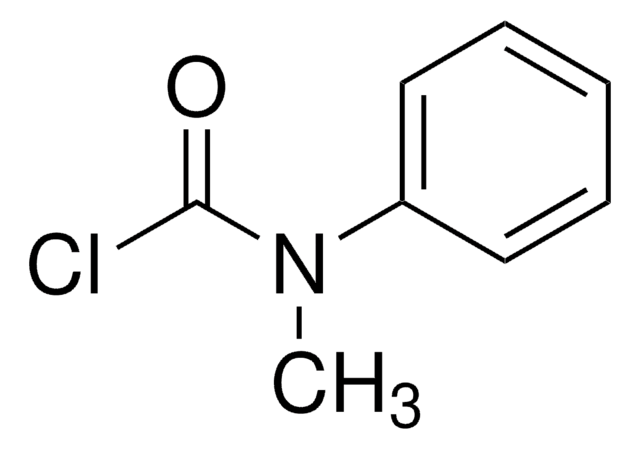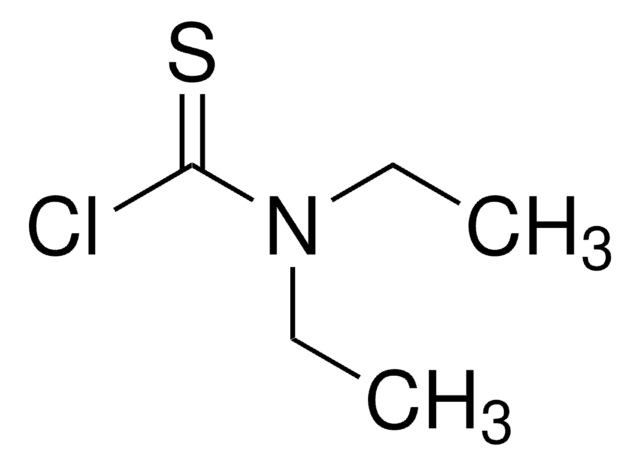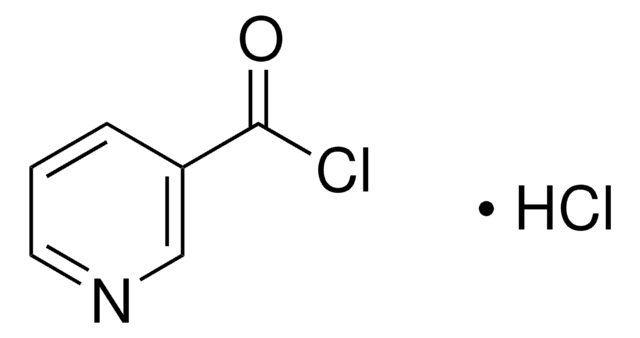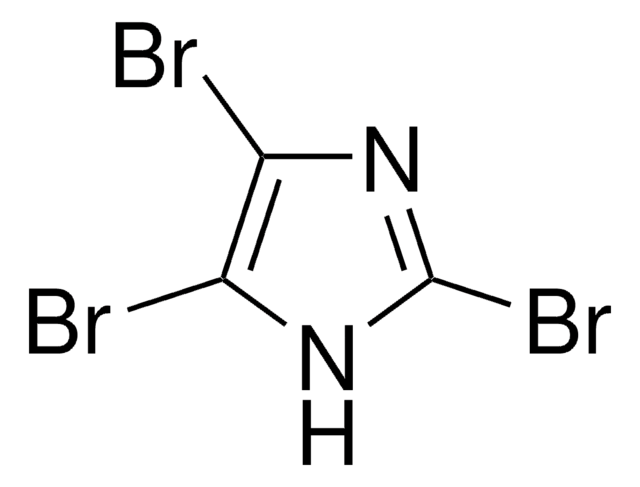추천 제품
Quality Level
분석
98%
양식
liquid
refractive index
n20/D 1.453 (lit.)
bp
167-168 °C/775 mmHg (lit.)
mp
−33 °C (lit.)
density
1.168 g/mL at 25 °C (lit.)
SMILES string
CN(C)C(Cl)=O
InChI
1S/C3H6ClNO/c1-5(2)3(4)6/h1-2H3
InChI key
YIIMEMSDCNDGTB-UHFFFAOYSA-N
애플리케이션
Dimethylcarbamyl chloride can be used to synthesize:
- Disubstituted carbamates from benzylphenols.
- 2-Cyanoisonicotinamide by reacting with isonicotinic acid N-oxide and zinc cyanide. This method was adopted to synthesize a novel xanthine oxidoreductase inhibitor.
- Acetylcholinesterase (AChE) and serotonin transporter (SERT) dual inhibitors.
신호어
Danger
유해 및 위험 성명서
Hazard Classifications
Acute Tox. 3 Inhalation - Acute Tox. 4 Oral - Carc. 1B - Eye Irrit. 2 - Skin Irrit. 2 - STOT SE 3
표적 기관
Respiratory system
Storage Class Code
6.1C - Combustible acute toxic Cat.3 / toxic compounds or compounds which causing chronic effects
WGK
WGK 3
Flash Point (°F)
179.6 °F - closed cup
Flash Point (°C)
82 °C - closed cup
개인 보호 장비
Faceshields, Gloves, Goggles, type ABEK (EN14387) respirator filter
이미 열람한 고객
Polypeptides. XII. The Optical Rotation and Configurational Stability of α-Helices1.
Blout E R, et al.
Journal of the American Chemical Society, 79(3), 749-750 (1957)
Zinc cyanide mediated direct α-cyanation of isonicotinic acid N-oxide. Application to the synthesis of FYX-051, a xanthine oxidoreductase inhibitor.
Huo Z, et al.
Tetrahedron Letters, ?49(28), 4369-4371 (2008)
Design and synthesis of dual inhibitors of acetylcholinesterase and serotonin transporter targeting potential agents for Alzheimer's disease.
Kogen H, et al.
Organic Letters, 4(20), 3359-3362 (2002)
A R Sellakumar et al.
Journal of environmental pathology and toxicology, 4(1), 107-115 (1980-08-01)
The comparative carcinogenicity of dimethylcarbamoyl chloride (DMCC) was studies in male, Syrian Golden Hamsters by inhalation. Hamsters were exposed to 1ppm and the exposure periods were 6 hours per day, 5 days per week for the lifetime of the animals.
A Segal et al.
Chemico-biological interactions, 40(2), 209-231 (1982-06-01)
The rodent carcinogens dimethylcarbamyl chloride (DMCC) and diethylcarbamyl chloride (DECC) react with dGuo (pH 7.0-7.5, 37 degrees C, 4 h) to form the O6-acyl derivatives 6-dimethylcarbamyloxy-2'-deoxyguanosine (6-DMC-dGuo) and 6-diethylcarbamyloxy-2'-deoxyguanosine (6-DEC-dGuo), respectively. Reaction of DMCC with dThd under identical conditions yielded
Global Trade Item Number
| SKU | GTIN |
|---|---|
| D152803-5G | 4061836690021 |
| D152803-100G | 4061833560105 |
| D152803-500G | 4061836696221 |
자사의 과학자팀은 생명 과학, 재료 과학, 화학 합성, 크로마토그래피, 분석 및 기타 많은 영역을 포함한 모든 과학 분야에 경험이 있습니다..
고객지원팀으로 연락바랍니다.